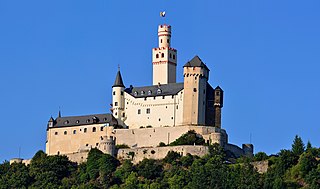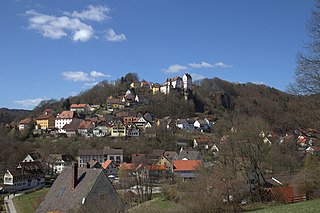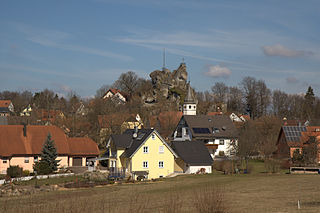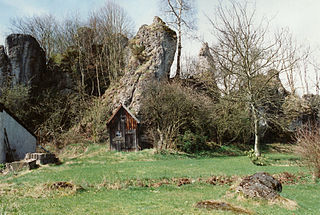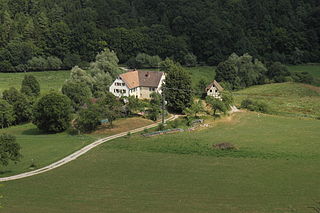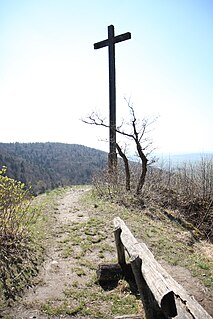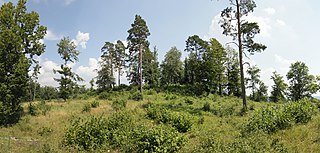| Altes Schloss | |
|---|---|
| Egloffstein-Affalterthal-"Altschlossberg" | |
 View of the burgstall from the east (November 2013) | |
| Coordinates | 49°42′39″N11°16′00″E / 49.710927°N 11.266804°E Coordinates: 49°42′39″N11°16′00″E / 49.710927°N 11.266804°E |
| Type | Hill castle on a spur |
| Code | DE-BY |
| Height | 458.9 m above sea level (NN) |
| Site information | |
| Condition | burgstall (no above-ground ruins) |
| Site history | |
| Built | Probably High Middle Ages |
| Materials | Quadermauerwerk |
| Garrison information | |
| Occupants | Unknown |
The burgstall of the Altes Schloss ("Old Castle" or "Old Palace") is the site of an old castle near the village of Affalterthal in Bavaria, that was probably built in the High Middle Ages for the nobility. It lies within the municipality of Egloffstein in the Upper Franconian county of Forchheim.

A burgstall is a German term referring to a castle of which so little is left that its appearance cannot effectively be reconstructed. It has no direct equivalent in English, but may be loosely translated as "castle site". Variations in the literature include Burgstelle, Altburgstelle, die Burgställe (plural), Burgstähl (archaic) or abgegangene Burg. In German castle studies, a burgstall is a castle that has effectively been levelled, whereas a "ruin" (Ruine) still has recognisable remnants of the original castle above the level of the ground.

A castle is a type of fortified structure built during the Middle Ages predominantly by the nobility or royalty and by military orders. Scholars debate the scope of the word castle, but usually consider it to be the private fortified residence of a lord or noble. This is distinct from a palace, which is not fortified; from a fortress, which was not always a residence for royalty or nobility; and from a fortified settlement, which was a public defence – though there are many similarities among these types of construction. Usage of the term has varied over time and has been applied to structures as diverse as hill forts and country houses. Over the approximately 900 years that castles were built, they took on a great many forms with many different features, although some, such as curtain walls, arrowslits, and portcullises, were commonplace.

Bavaria, officially the Free State of Bavaria, is a landlocked federal state of Germany, occupying its southeastern corner. With an area of 70,550.19 square kilometres, Bavaria is the largest German state by land area comprising roughly a fifth of the total land area of Germany. With 13 million inhabitants, it is Germany's second-most-populous state after North Rhine-Westphalia. Bavaria's main cities are Munich, Nuremberg and Augsburg.
Contents
The site of the former spur castle is freely accessible.

A spur castle is a type of medieval fortification that uses its location as a defensive feature. The name refers to the location on a spur projecting from a hill. Ideally, a spur castle would be defended on three sides by steep hillsides, with the only vulnerable side the one where the spur joins the next hill.

